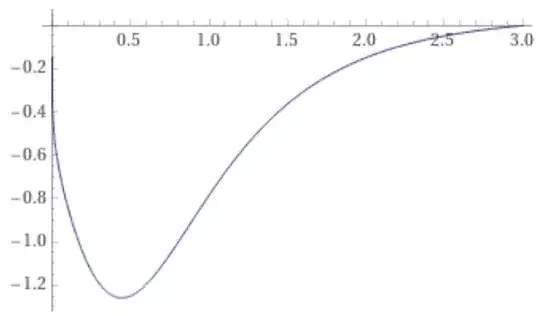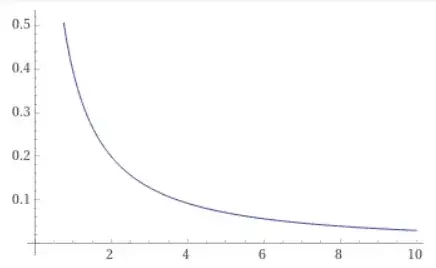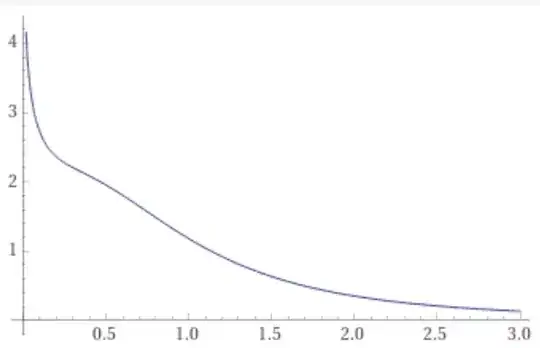@integralsbot at twitter posted interesting integral and complicated integrals that gives $\pi$ as a result. Some of the problems are really difficult to prove, such as
$$\int_{0}^{\infty} \frac{\left(\frac{\pi x}{2}-\log x\right)^3}{\left(x^2+1\right)^2 (\log^2x+\frac{\pi ^2}{4})} dx =\pi\tag{1}\label{eq1}$$
I've tried to calculate this and it appeared very difficult. The plot of the integrand doesn't look very extraordinary.
Using partial fraction decomposition, the integral can be transformed to the following form:
$$\int_{0}^{\infty} \left( \frac{3 \pi x}{2 \left(x^2+1\right)^2}-\frac{\log (x)}{\left(x^2+1\right)^2}+\frac{\pi^3 x^3-6 \pi ^2 x^2 \log (x)-3 \pi ^3 x+2 \pi ^2 \log (x)}{2 \left(x^2+1\right)^2 \left(4\log ^2(x)+\pi ^2\right)} \right)$$
The first two integrals can be more or less solved $$ \int_{0}^{\infty} \frac{3 \pi x}{2 \left(x^2+1\right)^2} = \frac{3 \pi}{4}, \>\>\>\>\> \int_{0}^{\infty} -\frac{\log (x)}{\left(x^2+1\right)^2} = \frac{\pi}{4} $$ to yield: $$ \int_{0}^{\infty} \frac{3 \pi x}{2 \left(x^2+1\right)^2} - \frac{\log (x)}{\left(x^2+1\right)^2} \ dx= \pi \tag{2}\label{eq2} $$
This is interesting by itself, since the integrand displays interesting shape with two inflection points of the first derivative. I wouldn't expect it to be equal to $\pi$ (yet the algebra clearly shows that it is).
What is even more interesting is
$$ \int_{0}^{\infty} \frac{\pi^3 x^3-6 \pi ^2 x^2 \log (x)-3 \pi ^3 x+2 \pi ^2 \log (x)}{2 \left(x^2+1\right)^2 \left(4\log ^2(x)+\pi ^2\right)} = 0 \tag{3}\label{eq3}$$
which follows from \eqref{eq1} and \eqref{eq2}. This is correct (I've checked numerically with relatively high precision of ~100 decimals). It seems very hard to prove though. The plot of the integrand doesn't appear to suggest any trivial solution:

An obvious way to transform integral \eqref{eq3} is to expand the numerator:
$$ \int_{0}^{\infty} \left( -\frac{3 \pi ^2 x^2 \log (x)}{\left(x^2+1\right)^2 \left(4 \log ^2(x)+\pi ^2\right)}-\frac{3 \pi ^3 x}{2 \left(x^2+1\right)^2 \left(4 \log ^2(x)+\pi ^2\right)}+\frac{\pi ^2 \log (x)}{\left(x^2+1\right)^2 \left(4 \log ^2(x)+\pi ^2\right)}+\frac{\pi ^3 x^3}{2 \left(x^2+1\right)^2 \left(4 \log ^2(x)+\pi ^2\right)} \right), $$
But the resulting integrals are also difficult. (I've tried to solve the second one, since it seems to have the simplest numerator, but didn't managed to get any result). Neither their numerical values (-1.93789..., 3.229820..., -0.322982..., -0.968946...) nor the plots indicate any obvious cancellations. Maybe there is some indirect way to show the integral \eqref{eq3} vanishes without solving it at all.
I don't know where \eqref{eq1} comes from but it seems to be true and interesting. I believe some solution of this integral exists. I post it as an challenge/puzzle. Maybe someone knows it, sees clever substitution, or provides any insight into.
So, the question is: how to prove either \eqref{eq1} or \eqref{eq3}?

